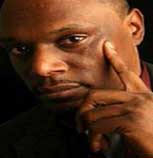
Why Don’t African Americans Prioritize AIDS?

February 7 has been deemed as National Black AIDS Awareness Day (NBAAD). NBAAD is a well-meaning, culturally extraneous attempt at bringing a Black face to the HIV/AIDS issue. However, HIV/AIDS is a unique disease that necessitates more. It must be a part of culturally restorative, educational and affirming Black critical thought enhancing, holistic initiative for African Americans. Everyday Black folks are just not interested in HIV/AIDS, or most things with that issue as the sole focus.
More immediate African American priorities are to stop experiencing the disruption of communities, families, relationships and self-perception resulting from disproportionate incarceration, joblessness, poverty, an epidemic of health and well-being barriers resulting from substance and sexual abuse and bigotry, and a racist (or White biased) media and “educational” system that trivializes the consequences of its racism on African Americans.
Initially, in 1981, when HIV/AIDS first began ravaging the gay community (a predominantly White male community), the media portrayed AIDS as a White gay disease. That impression among Americans, including African Americans, resulted from how the disease was first introduced. At the time, African Americans were mistakenly relieved that this scourge was not another problem adding to the already painful and difficult experience (across class) of blatant racism, police brutality and presumed guilt by law enforcement, or high unemployment and poverty, and discrimination experienced by legions of African Americans, especially males.
In the epicenters of the AIDS epidemic, San Francisco, Los Angeles and New York, while the White gay community suddenly faced a mysterious and deadly disease, Black people had already been facing epidemics of premature death, and various traumas. (Black men and women were simultaneously experiencing an HIV epidemic even then; it just never made the press.)
During the advent of the AIDS crisis, African Americans were keenly aware of (and demoralized by) the perpetual implication that this deadly virus came from a Black (or African) source. Along with the perpetual media parade of emaciated and sunken White male faces, were “credible” reports that the AIDS virus originated in Haiti. Then, later, while never recanting the AIDS/Haiti myth, “experts” claimed that “HIV” came from a green monkey in central Africa. This sparked insinuations that Black folks in Africa were having sex with this monkey. These now unfounded approximations – presented then as fact – wreaked havoc on already strained Black self-concept and perception.
As a result, instead of the media drawing African Americans toward addressing the disease, they were repelled by the newest stigma which could make being Black in America even harder. Though the Black church and religion is often presented as the source of Black resistance to addressing the HIV/AIDS issue, the biggest religious opponents to HIV education, patient’s rights and the provision of federal resources for care and prevention are really “religious” White republicans and members of the Christian Right.
In 2011, the Centers for Disease Control and prevention (CDC) report that, “At some point in their lifetimes, 1 in 16 black men will be diagnosed with HIV infection, as will 1 in 30 Black women.” From 2005-2008, the rate of HIV diagnoses among Blacks increased from 68/100,000 persons to 74/100,000. This increase reflects the largest increase in rates of HIV diagnoses by race or ethnicity. In 2006, black men accounted for two-thirds of new infections (65%) among all blacks. The rate of new HIV infection for Black men was 6 times as high as that of white men, nearly 3 times that of Latino men, and twice that of Black women. Black men who have sex with men (MSM) represented 63% of new infections among all Black men, and 35% among all MSM.
HIV infection rates are higher among Black MSM compared to other MSM. More new HIV infections occurred among young black MSM (aged 13-29) than among any other age and racial group of MSM. Also in 2006, the rate of new HIV infection for Black women was nearly 15 times as high as that of White women and nearly 4 times that of Latina women.
These alarming (basically 20 year old) statistics are sustained by the intersection of two phenomena that create dual deterrents to African American’s resolving HIV/AIDS (among other things). First is the defacing of Black cultural and self-perception resulting from 500 years of life as Black in America, and second, is that “Black Crisis in America” is very lucrative.
‘Black people in crisis’ makes for lucrative business venturing in America. Beneficiaries include: the prison industrial complex; the hair product industry, i.e. hair weaves, etc.; fast-food companies (they tend to set up shop in droves in Black communities); alcohol and crack-cocaine dealers, and [Black] HIV/AIDS issue promoters. All are getting rich off of Black crises. The Black HIV/AIDS industry has brought attempts at fame, and/or actual fortune to a few HIV positive Black gay activists who self-positioned themselves as the voice of the community and authors of books on homosexual Black fiction that vilify Black men and frighten Black women, pharmaceutical companies, and federally funded research machines.
Regarding the defacing of Black cultural and self-perception, there are at least three documented, though marginally acknowledged, examples of racially-charged self-perception dilemmas (and self-vilifying decision-making) had among Blacks. The first instance precedes public recognition of HIV/AIDS by 27 years. In 1954, the studies of African American psychologist Dr. Kenneth Clark and his wife Mamie Clark found contrasts among children attending segregated schools in Washington, DC versus those in integrated schools in New York. They found that Black children often preferred to play with white dolls instead of Black ones.
We were provided the second instance 52 years later when in 2006 filmmaker Kiri Davis recreated the doll study and documented it in a film entitled “A Girl Like Me.” Davis found the same results as the Clarks’ in their study. Then, last year, in May 2010, CNN featured a series called ‘Black or White: Kids on Race.’ It centered on a study conducted by African American child psychologist and University of Chicago professor Margaret Beale Spencer. A leading researcher in the field of child development, commissioned by CNN, Dr. Spencer designed a pilot study to explore “White bias” thoughts on race had by Black and White American children.
While the level of “White bias” (or anti-Black perspectives) were high among White children, more than 70% of older Black kids (as opposed to 59% of older White kids) perceived children with darker skin tones as undesirable, bad, mean, dumb or ugly. More than 61% of younger Black children had this same “White bias.” The fact that Blacks may have anti-Black views toward other Blacks and themselves has a definitive debilitating impact on the quality of their life, decisions and health choices.
Although statistics clearly show Blacks as most impacted by HIV/AIDS, most of the policy and decision-makers determining the allocation of resources are White, White and gay, or gay-identified Black males assimilated into [White] gay community and culture. This and other relevant obstructions to Black HIV success are backgrounded when explaining the still raging numbers of HIV infected Black people, with more blaming language used instead.
For example, recently, CNN’s “Anderson Cooper 360°” dedicated a special hour to AIDS in America. The show featured a White gay celebrity, a Black female Oscar-winning actress, and a Black gay activist. There were no trained or experienced Black HIV/AIDS experts, i.e. prevention, public health or behavioral health professionals, on the show. When Mr. Cooper asked his panelists, “Why does the Black community still have such a bad HIV/AIDS problems” answers consisted of, “[African Americans] came to the party late,” and “Black communities have no infrastructure or access.”
Yet, Black men, primarily HIV positive and/or gay identity advocates, have been involved and have convened national conferences, expended multimillions of dollars and have had programs resourced to address HIV/AIDS for over 20 years. Despite that it was an Anderson Cooper program – in May 2010 – that did an expose on self-hate among Black children, he nor any of his guests made the connection between Black self-perception conflicts and 30 year of Blacks disproportionately suffering and dying from a completely preventable disease.
In yet another telling incident, in 1989, driven by trends and where federal resources were being aimed, the first Black AIDS institute (the African American AIDS Support-Services and Survival Institute) in the country was developed in Oakland, California. In 1990, it became clear that HIV/AIDS risks resulted from pre-exiting issues seemingly unconnected directly to HIV/AIDS. As a result, that center removed AIDS and HIV from its name and focus, and became an African American wellness and cultural center. This revised strategy attracted legions of African Americans in for services.
In conclusion, National Black AIDS Awareness Day is fine, but Africans Americans need a ‘National Black Restoration and Self-Love’ (NBRSL) Day, not a National Black AIDS Awareness Day. Why should African Americans prioritize AIDS? Clearly, African Americans first need to resolve tendencies among African American children to pick the White doll over themselves. Once basic issues of self love, self esteem and cultural affirmation are clearly defined and addressed, it is then, when Black people will begin to really care about HIV/AIDS.
Cleo Manago is CEO of AmASSI Centers for Wellness and Culture and Black Men’s Xchange National – http://www.youtube.com/watch?v=758_qqGzA1o.








